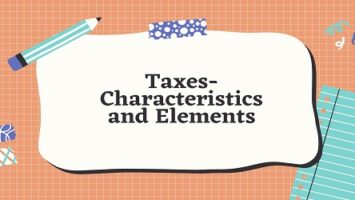Table of Contents
Stabilization Function of Budget Policy:
Prof. Musgrave, while defining the stabilization functions of the budget policy observed that “A free economy, if uncontrolled tends towards more or less drastic fluctuations in prices and employment; and apart from relatively short term swings, maladjustments of a secular sort may arise towards unemployment or inflation.” Hence, public policy must assume a stabilizing function in order to hold within tolerable limits departures from high employment and price stability. Thus, fiscal policy must be designed to maintain or achieve the goals of high employment, a reasonable degree of price stability, soundness of foreign accounts, and an acceptable rate of economic growth.
Need and Objectives for Stabilization:
Fiscal Policy is needed for stabilization, since full employment and price stability do not come about automatically in a market economy but require public policy guidance. Without it, the economy tends to be subject to substantial fluctuations and it may suffer from periods of unemployment or inflation. No one can predict whether the bias in the years ahead will be toward inflation or deflation. To make matter worse, unemployment and inflation may exist at the same time. Thus, public policy is needed to deal with these contingencies.
Situation Which Calls for Stabilization:
The overall level of employment and prices in the economy depends upon the level of aggregate demand relative to potential output or capacity output valued at prevailing prices. The level of demand depends upon the spending decisions of millions of consumers, corporate managers, financial investors, and incorporated operators. However, in any one period, the level of expenditure may be insufficient to secure full employment of labor and other resources. It means that expenditure is insufficient to absorb the available output valued at prevailing prices and there is either unemployment or underemployment. There is no ready mechanism by which such employment will restore itself automatically. Hence, expansionary measures to raise aggregate demand are needed.
At other times, expenditures may exceed the available output under conditions of high employment and thus may cause inflation. In such, situations restrictive conditions are needed to reduce demand.
Furthermore, just as deficient demand may generate further deficiency, so may an increase in prices generate further expectations of a price rise, leading to renewed inflation. In neither case, there is an adjustment process by which the economy is automatically returned to high employment and stability.
Rules to Achieve Stability:
(1) If voluntary unemployment prevails, increase the level of demand so as to adjust aggregate expenditures upwards to the value of output produced at full employment.
(2) If inflation prevails, reduce the level of demand so as to adjust aggregate expenditure downward to the value of output measured in current, rather than rising prices.
(3) If full employment and price level stability prevail, maintain the aggregate level of money expenditures to prevent unemployment and inflation.
The first rule is based on the proposition that fiscal policy may be used to increase the aggregate level of expenditure, and then this will raise the level of employment. The level of demand may be raised in a number of ways. The government may undertake to increase its own expenditure on goods and services. It may take steps leading to an increase in the level of private expenditures, or it may combine both measures. Under conditions of depression, an increase in expenditure ordinarily leads to an increase in real output and employment. This may even eventually remove the conditions of depression and unemployment.
The second rule relates to a situation where total expenditure exceeds feasible output valued at the current prices. An increase in the level of aggregate demand now produces inflation. The required adjustments are the inverse of those used in the depression case. Thus, government expenditure on goods and services will be reduced, tax rates may be increased, and transfer payments may be cut.
The third rule of compensatory finance relates to the maintenance of a high level of unemployment with price-level stability. However, it does not imply a constant level of aggregate demand. A stabilization policy in a growing economy doesn’t mean that the level of income is to be stabilized, on the contrary, the policy must provide for an expansion of demand commensurate with the growing capacity to produce. It must be designed to result in a rate of growth that moves along with an equilibrium path so that high employment and price level stability are maintained in the process of expansion.
It is obvious from the above analysis that changes in the budget policy may be used as a positive means of obtaining or offsetting changes in demand.









Comments (No)